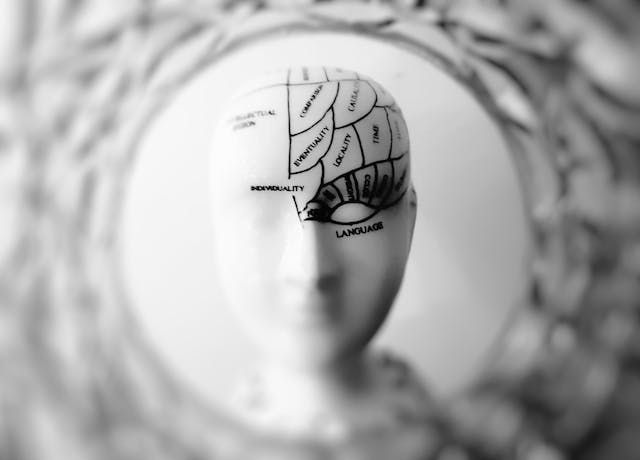
Art therapy is a powerful tool that often goes unrecognized in the world of mental health treatment. This form of therapy utilizes the creative process of making art to improve a person's physical, mental, and emotional well-being. When traditional talk therapy fails to adequately address deep-seated trauma, art therapy steps in to provide a unique outlet for expression and healing. In this blog post, we will explore the role of art therapy in the context of Eye Movement Desensitization and Reprocessing (EMDR) therapy, a widely-used approach for treating trauma and other psychological issues.
Understanding Art Therapy and Its Foundations
At its core, art therapy is built on the premise that engaging in the act of creating art is inherently therapeutic. It can foster personal growth, healing, and mental wellness. This therapeutic discipline offers a distinctive path for individuals to delve into their subconscious. Art enables them to uncover and address emotions and conflicts that might be challenging to express through words alone. It operates on the understanding that the creative process, as a form of nonverbal communication, has the unique capacity to reveal and work through complex emotional experiences.
\As participants navigate through various art-making techniques, they are provided with the opportunity to visualize their emotional landscape, guided by an Art Therapist. Hopefully, this may lead to profound insights and transformative healing experiences. This approach to therapy is especially beneficial for individuals who find conventional verbal communication limiting. Some people may feel it is even inadequate in expressing the depth of their internal experiences. Through art, they are able to articulate the inexpressible, facilitating a deeper connection with their own emotional realities, making it great for those struggling with words.
The Synergy Between Art Therapy and EMDR Therapy

The convergence of art therapy and EMDR creates a powerful alliance for tackling mental health issues like PTSD and anxiety, fitting different individual needs. This integrated approach facilitates a deeper engagement with the therapeutic process. It allows clients to unlock and process traumatic memories in a multifaceted manner.
While EMDR therapy focuses on desensitizing and reprocessing memories through bilateral stimulation, art therapy adds a layer of expressive richness. It provides a visual and tactile medium through which clients can explore and articulate their experiences.
The synergy of these therapies enhances emotional insight and healing. This is done by leveraging the strengths of each modality. EMDR's structured approach to trauma processing is complemented by the fluid and expansive nature of artistic expression. This combination broadens the avenues for understanding and healing, as well as caters to diverse needs and preferences, making therapy accessible to more individuals. By melding the cognitive with the creative, this integrated therapeutic approach opens up a dynamic space for healing, where emotions and memories can be navigated in a holistic and person-centered manner.
Art Therapy as a Safe Haven for Emotional Expression
Art therapy creates a nurturing and secure environment that enables individuals to delve into and express complex emotions with ease and without judgment. This method supports clients in accessing and articulating feelings that are otherwise hard to reach through more conventional therapeutic approaches. The process of making art in itself can be a profoundly healing act, offering a unique way to express emotions that might not be fully understood or verbalized. It invites an exploration of one's inner self, allowing for a non-verbal dialogue between the conscious and subconscious.
Through various artistic mediums, individuals can portray their emotions, experiences, and memories. Doing this fosters a sense of ownership and control over their healing journey. The tactile experience of handling art materials can also be soothing and grounding, providing a physical way to manage and express difficult emotions. In this respect, art therapy stands as a beacon of hope and solace for those navigating the complexities of healing from trauma. It can offer a path towards emotional clarity and relief that transcends the limitations of spoken language.
Enhancing the EMDR Process Through Art

Incorporating art therapy into EMDR therapy serves as a bridge to further facilitate the processing of traumatic memories. This integration allows individuals to symbolically represent their trauma, emotions, and recovery journey through art, offering a visual language for what might be too difficult to articulate with words. By engaging in artistic creation, clients can externalize their internal emotional struggles, making them more tangible and manageable.
This aids in the desensitization phase of EMDR and enriches the reprocessing phase. Clients can visually map out and reframe their experiences. The interplay between visual art and EMDR techniques fosters a comprehensive healing environment that honors both the cognitive and creative aspects of recovery. Through the use of art, individuals are empowered to navigate their healing process with a renewed sense of agency and creativity. It can potentially unlock deeper levels of emotional insight. This innovative approach underscores the adaptability and resilience of the human spirit. It offers a profound medium for transformation and growth within the context of trauma therapy.
Practical Approaches to Integrating Art Therapy with EMDR
To effectively weave art therapy into the framework of EMDR therapy, therapists can employ a variety of strategies tailored to enhance the therapeutic experience and foster deeper emotional healing. One practical approach involves inviting clients to engage in art-making activities directly before or after an EMDR session. This technique can serve as a powerful tool for clients to prepare mentally and emotionally for EMDR or to decompress and process their feelings afterward.
During EMDR sessions, therapists might also introduce art-based interventions. This is done as a means to facilitate the expression and processing of difficult emotions that arise. For instance, clients may be encouraged to draw or paint their emotional responses to EMDR prompts. Doing the art allows them to capture and explore their feelings in a tangible form. Additionally, art can be used to symbolize the transformation of negative beliefs into positive ones, helping clients visualize their journey towards healing in a concrete way.
Another approach includes utilizing art as a medium for clients to express their narrative or story. It provides a visual representation of their trauma and its impact on their life. This can be particularly useful in the reprocessing phases of EMDR, where understanding and reframing of past experiences is crucial.
By incorporating these practical art therapy techniques within EMDR sessions, therapists can offer a multi-layered healing experience that addresses the emotional and cognitive aspects of trauma, fostering a deeper, more holistic recovery process.

Living with depression can be challenging at any time of year. For people struggling with their mental health, the summer months can bring a unique set of obstacles. It is implied that summer is for enjoying the warmth of the sun and summer festivities. However, for individuals battling depression, they may find it difficult to find that same sense of lightness and happiness. In this blog post, we will explore how therapies like Eye Movement Desensitization and Reprocessing (EMDR) and Internal Family Systems (IFS) can offer hope and relief for those suffering from depression, even in the midst of summer.
Understanding Depression in the Summer Sunlight
Summer often paints a picture of endless joy and outdoor celebrations. For those grappling with depression, this season can cast a shadow of heightened despair. The contrast between the societal expectation of summer bliss and the personal reality of inner turmoil can exacerbate feelings of isolation and inadequacy. During these warmer months, the pervasive cheerfulness can feel isolating to someone struggling internally. It can make the gap between their experience and that of others seem even wider. This disparity can intensify the sense of being out of place or left behind.
This may feel like the world around them seems to bask in a light that feels unattainable. Furthermore, the increased social activities and gatherings that characterize summer can serve as reminders of one's battles with social anxiety. It can add layers of complexity to an already challenging mental health landscape. The omnipresent cultural message that summer is a time for unfettered happiness can inadvertently place undue pressure on those who find their reality far removed from this idealized notion. This might turn what is meant to be a season of warmth and growth into a period of deepened struggle.
Celebrating Summer Festivities While Coping with Depression

Engaging in summer celebrations when dealing with depression may seem daunting. Despite that, small, intentional actions can create moments of joy amidst the struggle. Begin by acknowledging your feelings without judgment and permit yourself to participate in activities that feel manageable and comforting. Instead of succumbing to the pressure of attending large gatherings, consider smaller or more intimate settings where you feel safe and supported.
Creating a personal tradition or ritual that brings you peace and joy during the summer can also be a powerful step towards healing. This might be as simple as watching the sunrise, taking a walk in nature, or dedicating time to a hobby you love.
Additionally, harness the power of connection by reaching out to trusted friends or family members who understand your journey. Sharing your experiences with them can provide a sense of belonging and support, making the festivities less isolating. If direct participation feels too overwhelming, try to find alternative ways to engage with the spirit of summer. This can be planning a virtual get-together, or sitting outside to soak in the warmth and sights of the season.
Remember, it’s perfectly acceptable to decline invitations when you need time for yourself. Your well-being is paramount, and finding a balance that respects your mental health is crucial. Celebrating in a way that honors where you are on your journey can make the summer more enjoyable and meaningful.
An Overview of EMDR Therapy for Depression Treatment
EMDR (Eye Movement Desensitization and Reprocessing) therapy stands as a transformative approach in the field of psychological treatment, particularly for depression. This innovative method harnesses the power of bilateral stimulation, such as side-to-side eye movements or tapping. This is to facilitate the processing of distressing memories and emotions that contribute to depressive states. The therapy sessions are structured to allow individuals to revisit traumatic or triggering events in a safe and controlled environment.
Through guided eye movements led by a trained therapist, patients can re-examine these experiences without the intense emotional response that they typically elicit. The aim is to desensitize the individual to these distressing memories. By reducing their impact, it allows for the development of healthier coping mechanisms. As a result, EMDR has been effective in mitigating the symptoms of depression, providing a pathway toward emotional healing and resilience. This therapy offers a beacon of hope for those seeking to overcome the effects of depression. It offers a way to reclaim a sense of mental freedom and well-being.
Exploring Internal Family Systems (IFS) as a Depression Treatment

Internal Family Systems (IFS) therapy emerges as an innovative and compassionate approach to tackling the complexities of depression. This therapeutic model delves into the multifaceted nature of the psyche. It proposes that the mind consists of subpersonalities, or "parts," each with its unique perspectives, feelings, and memories. IFS aims to identify and understand these parts, especially how they interact and sometimes conflict, contributing to depressive symptoms. Central to IFS therapy is the concept of the Self. The Self is a core aspect of being that embodies qualities such as confidence, clarity, and compassion. Through IFS, individuals learn to access their Self and lead their internal system with these qualities. Doing this offers comfort and guidance to parts in distress.
The process of IFS therapy involves engaging with these parts in a nonjudgmental and curious way, recognizing their positive intentions, and understanding the burdens they carry. These burdens typically stem from past traumas or negative beliefs. By healing these parts, IFS helps to release their burdens, allowing for a more harmonious internal system. This can lead to significant decreases in depressive feelings, as individuals are no longer weighed down by the conflicts and burdens within their parts. Through fostering an internal environment of understanding, compassion, and support, IFS therapy holds the potential to transform the internal landscape. It can offer relief and a pathway out of depression's depths.
The Challenge of Treatment-Resistant Depression
Treatment-resistant depression presents a profound obstacle, making the journey toward mental wellness seem insurmountable for some. Defined by a lack of response to traditional treatments, such as medication and standard talk therapies, individuals facing this form of depression may feel trapped in a cycle of unsuccessful attempts to find relief. This condition demands a more nuanced understanding of the underlying causes of depression. It urges a shift toward innovative and personalized therapeutic approaches.
The complexity of treatment-resistant depression lies in the persistence of symptoms and the unique experiences and histories of those affected. Recognizing this challenge is crucial in exploring alternative paths to healing. Delving deeper into the psychological roots of depression with therapies like EMDR and IFS can potentially be beneficial. For those grappling with this daunting form of depression, it's essential to maintain hope and continue seeking options that address the specific dimensions of their distress.
Can EMDR and IFS Offer Hope for Treatment-Resistant Depression?

For individuals navigating the challenging waters of treatment-resistant depression, traditional approaches may not always lead to the desired shores of relief and recovery. In these instances, EMDR (Eye Movement Desensitization and Reprocessing) and IFS (Internal Family Systems) therapy stand out as potential lighthouses, offering guidance and hope. These therapies delve into the deeper layers of the psyche. They address the root causes of depression rather than just its surface symptoms. EMDR focuses on reprocessing traumatic memories that often underpin depressive disorders, allowing individuals to experience these memories in a less distressing way.
Meanwhile, IFS offers a path to understanding and healing the fragmented parts of oneself, fostering internal harmony and reducing depressive symptoms. By engaging with these innovative therapies, individuals with treatment-resistant depression may find avenues for change that were previously unexplored. The personalization and depth of EMDR and IFS can resonate with those who have felt misunderstood or untouched by other treatments. It provides a fresh perspective and renewed hope. As more research unfolds and clinical experiences accumulate, the potential of EMDR and IFS to significantly impact treatment-resistant depression becomes increasingly evident. It offers a glimmer of light to those who have long been in the shadows.
Practical Steps to Seek Help and Start Therapy
Taking action to address your depression by connecting with a professional can mark the beginning of your journey to wellness. To start, research therapists who specialize in depression and are trained in EMDR, IFS, or any therapy that resonates with you. Many resources are available online. This includes directories and reviews, to help you find a clinician who matches your needs and preferences. Don't hesitate to reach out and ask questions about their approach, experience, and how they've helped others with similar challenges.
Booking an initial consultation can provide insight into whether you feel comfortable with the therapist and their methodology. Remember, the therapeutic relationship is pivotal to the success of your treatment, so feeling understood and safe is essential. If the fit isn't right, it's perfectly fine to seek out another professional who better aligns with your expectations and needs.
Additionally, consider joining support groups, either in-person or online. Connecting with others facing similar struggles can offer validation, encouragement, and practical advice on navigating depression. Support groups also provide a sense of community and belonging, vital components in overcoming feelings of isolation.
Finally, be open to discussing your concerns with loved ones. While starting therapy is a personal decision, having the support of friends or family can bolster your resolve and provide an additional layer of support as you embark on this healing journey.

For many individuals in the LGBTQIA+ community, the journey of transitioning can be a tumultuous one. A journey filled with a range of emotions including anxiety and depression. The process of coming to terms with one's gender identity, undergoing hormone replacement therapy (HRT), and potentially having surgeries can be overwhelming. However, there is a therapeutic approach that may offer relief and help individuals feel more connected with their mind and body. It is called Eye Movement Desensitization and Reprocessing (EMDR) therapy.
Understanding the Emotional Terrain of Transitioning
Transitioning, for many within the LGBTQIA+ community, represents not only a journey of physical metamorphosis but also of profound emotional exploration and self-discovery. This path, while ultimately affirming, is often fraught with complex feelings that can challenge even the strongest among us. As individuals embark on this deeply personal quest to align their outer selves with their inner truth, they may confront a myriad of societal pressures and internal conflicts that can exacerbate feelings of anxiety and depression.
The emotional landscape of transitioning is intricate and varied. It can encompass the excitement and hope of becoming more authentically oneself. It also comes with the fear and uncertainty that change inevitably brings. This anticipation of achieving congruence in one’s gender identity can be shadowed by the dread of potential isolation, misunderstanding, and discrimination. These external pressures compound the internal struggle, making it difficult for some to navigate the process of self-acceptance and self-love.

Complicating this journey further are the obstacles to finding affirming support and understanding. Misconceptions and stigma about what it means to transition can leave individuals feeling isolated and invalidated. This can intensify feelings of anxiety and depression. The daunting task of explaining one’s identity to others, fear of rejection, and the constant battle against societal norms and expectations can be overwhelming, leading to a profound sense of loneliness and despair.
As such, the emotional terrain of transitioning is marked by highs and lows. This can range from moments of exhilarating clarity as well as painful doubt. The process requires incredible resilience and courage, as individuals navigate through this complex emotional landscape in pursuit of their true selves. While the journey is inherently challenging, understanding and acknowledging these emotional experiences are crucial steps toward healing and growth.
An Introduction to EMDR Therapy
Eye Movement Desensitization and Reprocessing (EMDR) therapy emerges as a compelling psychotherapeutic approach. It is particularly renowned for its efficacy in addressing trauma-related conditions. EMDR facilitates the processing of distressing memories and emotional pain by activating both hemispheres of the brain through bilateral stimulation. This bilateral stimulation can be guided eye movements or tactile tapping. This innovative method aims to assist individuals in reorganizing and reinterpreting memories and emotions that are at the root of their psychological distress.
Developed in the late 1980s, EMDR has rapidly evolved and garnered empirical support as a treatment for various manifestations of psychological distress. Its unique methodology involves eight distinct phases, guiding clients from history-taking to the processing of traumatic events, and culminating in the consolidation of adaptive coping mechanisms. During EMDR sessions, therapists work closely with clients to identify specific distressing memories. They also help to identify negative beliefs about themselves that are associated with these memories. Through the structured phases of EMDR, clients are encouraged to focus on these memories while simultaneously engaging in bilateral stimulation. This dual focus facilitates the brain's natural healing process. This allows for the emotional charge of the memory to be diminished and for a more adaptive, empowering narrative to emerge.
Importantly, EMDR therapy goes beyond mere symptom relief, striving to foster a holistic sense of healing. Clients often report a decrease in distress related to specific memories and an overall improvement in their well-being. This gives room for an increased capacity to engage in their lives more fully. By directly targeting the underlying emotional impact of traumatic and distressing experiences, EMDR holds promise as a transformative therapeutic modality, especially for those contending with the profound emotional complexities associated with transitioning. Through its structured yet flexible approach, EMDR offers a pathway to healing that is both scientifically grounded and deeply attuned to the individual's psychological landscape.
EMDR in Action: Healing from Gender Dysphoria

EMDR therapy emerges as a vital resource for those grappling with gender dysphoria. Gender dysphoria is a condition characterized by profound discomfort due to a discrepancy between one’s experienced gender and the gender assigned at birth. This discomfort often manifests as severe anxiety, depression, and a disconnection from one’s body. In navigating these turbulent emotions, EMDR offers a promising avenue for healing and self-discovery.
Through its structured approach, EMDR targets the distressing memories and negative self-perceptions that underpin gender dysphoria. Individuals may harbor deep-seated beliefs of not belonging, being misunderstood, or feeling inherently flawed due to their gender identity struggles. EMDR engages the brain’s natural healing processes, allowing individuals to reprocess these painful experiences and beliefs. By focusing on specific memories or thoughts while receiving bilateral stimulation, clients can start to dissociate the negativity, shame, or fear attached to these memories. It can pave the way for more affirmative and empowering narratives about their gender identity.
The therapy’s unique ability to delve into the layers of emotional pain and cognitive dissonance that accompany gender dysphoria makes it an invaluable tool. It assists in alleviating the acute distress associated with living in a body that feels incongruent with one’s gender identity. As these individuals process their experiences through EMDR, they often find that the emotional charge of their distressing memories diminishes. This reduction in emotional intensity can lead to a significant decrease in anxiety and depression levels. It can ultimately contribute to a more harmonious internal experience.
As part of a comprehensive treatment plan, EMDR facilitates a journey towards self-acceptance and body congruence. It helps individuals in the LGBTQIA+ community to not only reconcile their past experiences with their gender identity but also fosters a stronger, more positive connection with their bodies and selves. Through EMDR, the path to healing from gender dysphoria becomes more accessible. It, empowers individuals to embrace their true identity with confidence and peace.
The Role of EMDR in Overcoming Anxiety and Depression
EMDR therapy stands out as a potent intervention for mitigating the profound impacts of anxiety and depression. This is particularly poignant for those undergoing the transition process. This therapeutic modality dives deep into the psyche, addressing the root causes of these mental health challenges. Through the distinctive mechanism of bilateral stimulation, EMDR aids individuals in accessing and processing the distressing memories and entrenched negative beliefs that fuel their emotional turmoil.
In the context of transitioning, anxiety and depression often stems from accumulated life experiences, societal rejection, or internalized stigma. Each of the forementioned can create a pervasive sense of being trapped or misunderstood. EMDR facilitates a re-examination and restructuring of these painful narratives, allowing for a transformative healing journey. By engaging the brain's innate capacity for resilience and recovery, it offers a path through which clients can gradually diminish the intensity of their emotional pain. It makes room for more adaptive, positive perspectives on their identities and experiences.

The therapy’s focused approach enables individuals to dismantle the complex layers of anxiety and depression. This helps to foster a sense of empowerment and renewed self-compassion. As these individuals progress through the phases of EMDR, they often report a significant alleviation of their symptoms. People begin to experience an enhanced ability to cope with stress and embrace their true selves with greater confidence.
EMDR's role in combating anxiety and depression is thus pivotal. It offers not just a means to cope but a route to thriving. Its application within the transitioning journey underscores a commitment to holistic well-being. Doing this, acknowledges the intrinsic link between resolving past traumas. It truly fosters a future where one's gender identity can be lived fully and authentically.
Finding Support and Embracing EMDR Therapy
In the pursuit of healing and self-discovery during transitioning, the role of supportive therapy cannot be overstated. It is critical to connect with therapists who possess a deep understanding of gender diversity. It is just as important that they exhibit a genuine commitment to creating a respectful and welcoming therapeutic environment. EMDR therapy has the profound potential to address the psychological distress associated with transitioning. This requires navigating with a therapist is skilled in its application and sensitive to the nuances of the LGBTQIA+ experience.
Choosing the right therapist involves seeking out professionals who are conversant with EMDR and actively affirm and celebrate LGBTQIA+ identities. Such therapists are instrumental in fostering a space where individuals can explore their feelings and experiences without fear of judgment or misunderstanding. They play a crucial role in facilitating the therapeutic process, guiding individuals through the nuanced phases of EMDR with empathy and understanding.
Embarking on EMDR therapy with a supportive therapist opens up avenues for profound emotional healing and growth. This therapy is done in a manner that is both empowering and transformative. It enables individuals to work through the layers of anxiety, depression, and trauma that transitioning can unearth. The journey with EMDR therapy is one of reclamation, allowing individuals to rewrite their narratives with strength and authenticity.
The decision to seek out EMDR therapy, paired with the support of a knowledgeable and affirming therapist, marks a significant step towards achieving psychological well-being and a deeper alignment with one’s true self. It underscores the importance of supportive relationships in the healing journey, reminding individuals that they do not have to navigate this path alone.

In today's digital age, teaching has become more challenging than ever before. With the rise of millennial parenting styles and the prevalence of social media addiction across all age groups, educators are facing unprecedented levels of stress and burnout. Fortunately, Eye Movement Desensitization and Reprocessing (EMDR) therapy offers a promising solution to help teachers cope with the demands of their profession and support their students in navigating the complexities of modern education.
The Landscape of Modern Education and Millennial Challenges
The transformation of the educational environment in recent years has been profound, significantly influenced by the distinctive child-rearing practices of millennial parents. This generation of parents, having grown up with technology at their fingertips, often adopts a tech-savvy approach to parenting. This emphases open lines of communication and a partnership-oriented relationship with educators. However, this dynamic can lead to complexities in the classroom, as teachers strive to balance the digital-first expectations of millennial parents with the traditional educational values and practices.
Additionally, the millennial emphasis on individualized attention and customized learning experiences for their children can place added pressure on educators. People, who must navigate these demands while addressing the diverse needs of their entire student body. This shift has not only changed the way educators teach but also how they interact with parents. It requires new strategies and approaches to foster effective partnerships and promote student success in an ever-evolving educational landscape.
Understanding Social Media Addiction Across Ages

Social media's grasp extends far beyond a simple distraction. It weaves into the very fabric of students' lives across various age groups, cultivating an environment ripe for addiction. This pervasive issue sees young minds constantly battling for concentration amidst a barrage of notifications and digital interactions. It significantly impairs their academic capabilities and focus.
The allure of likes, shares, and instant communication holds a compelling sway, leading to a reduction in meaningful, face-to-face interactions and a dependency on digital validation.
Such addiction does not merely hinder educational outcomes. It also seeps into the mental health arena, potentially exacerbating feelings of isolation, anxiety, and depression among students. This complex web of digital engagement requires educators to adopt nuanced strategies to mitigate its impact. This encourages healthier online habits and fostering environments that prioritize both academic and emotional growth. In addressing social media addiction, the goal is to reclaim the attention and well-being of students, guiding them towards balanced, responsible use of technology.
The Psychological Toll on Educators

Navigating the dual pressures of millennial parenting expectations and the pervasive influence of social media, educators are enduring a significant psychological toll. The constant endeavor to balance digital-first approaches with traditional teaching methodologies. This, coupled with the need to engage students deeply entrenched in the digital world, places a unique strain on teachers. This relentless pressure exacerbates stress, propelling many towards feelings of anxiety and burnout.
Such emotional and mental fatigue not only impairs their capacity to provide high-quality education but also affects their personal well-being. The intensity of these challenges often leaves educators seeking strategies to safeguard their mental health while maintaining their commitment to fostering an enriching learning environment. In this milieu, the necessity for supportive interventions and coping mechanisms becomes paramount. It highlights the need for resources that can aid in managing the intricate dynamics of modern education.
Introduction to EMDR Therapy
EMDR therapy stands as a transformative approach within the therapeutic world. It is designed to aid individuals in processing and overcoming trauma, anxiety, and stress-related symptoms. This method employs bilateral stimulation, through eye movements or tactile tapping. It is a mechanism to facilitate the brain's processing of distressing memories and beliefs that contribute to emotional discomfort. Originating as a treatment for PTSD, its applications have broadened, showing effectiveness in addressing a range of psychological stressors. EMDR's unique capacity to accelerate the mind's natural healing processes presents a novel avenue for educators and students alike, grappling with the pressures of modern educational environments and digital disruptions.
Through targeted sessions, participants can experience relief from psychological burdens. It can pave the way for enhanced coping mechanisms and a renewed sense of mental clarity. This foundation in EMDR therapy elucidates its potential as a supportive tool in educational settings, aimed at ameliorating the emotional and cognitive challenges faced by today’s teachers and learners.
EMDR Therapy for Students

EMDR therapy holds significant potential for students ensnared in the challenges of navigating a digital-centric lifestyle and the stressors inherent in modern academic environments. This therapeutic approach is particularly adept at addressing the deep-seated psychological effects of social media overuse. This often manifest as heightened anxiety, decreased self-esteem, and impaired focus. Through the process of bilateral stimulation, students are guided to confront and reprocess negative beliefs or traumatic experiences that may be exacerbating their reliance on digital validation and hindering their academic and social development.
By integrating EMDR into student support services, educational institutions can offer a proactive pathway for students to break free from the cycle of digital dependency and its accompanying mental health issues. This not only aids in enhancing their emotional regulation and resilience but also cultivates a healthier relationship with technology. As students learn to manage their emotional responses and build a stronger sense of self-worth independent of online feedback, they're better equipped to engage fully with their educational journey.
Such therapeutic interventions can be instrumental in reorienting students toward more productive coping mechanisms. This encourages a shift from virtual spaces to real-world connections and learning. The adoption of EMDR therapy for student support underscores a commitment to nurturing not only the intellectual but also the emotional and psychological well-being of learners. It prepares them for a balanced and successful path through school and into adulthood.
Implementing EMDR in Educational Settings
The integration of EMDR therapy within schools represents a strategic approach to addressing the psychological challenges facing today's educational community. Key to this implementation is the professional development of educators and school mental health professionals, and equipping them with the skills necessary to facilitate EMDR techniques. Providing access to EMDR-trained therapists on campus can greatly enhance the support system available to both teachers and students.
Additionally, developing partnerships with local mental health organizations can expand resources and ensure a broad spectrum of support. Workshops and informational sessions could be organized to demystify EMDR therapy for the school community. It can highlight its benefits and potential to improve academic and emotional outcomes. By fostering an environment that values mental health as much as academic achievement, schools can cultivate resilience and well-being across their populations. This will empowers educators and learners to navigate the complexities of the digital age with confidence and support.
Conclusion and Moving Forward
The challenges presented by the intersection of millennial parenting, media addiction, and the demands of modern education require innovative solutions. EMDR therapy represents a powerful tool in this quest. It offers both educators and students a pathway to better mental health and resilience. As we look to the future, the importance of integrating psychological well-being strategies into the fabric of our educational systems cannot be overstated. Schools must become places where mental health resources, like EMDR, are readily accessible to address the complexities of today's digital and educational landscapes.
By equipping our teachers with the means to manage stress and burnout effectively, and providing our students with the skills to navigate their digital world healthily, we set the stage for a more positive and productive learning environment. The journey ahead will require commitment, collaboration, and open-mindedness from all stakeholders in the educational community. Embracing EMDR therapy as part of a comprehensive approach to mental health in schools is a critical step toward fostering an environment where everyone can thrive amidst the challenges of the 21st century.

Experiencing or witnessing a profoundly distressing or threatening event can lead to the development of post-traumatic stress disorder, commonly known as PTSD. When you have PTSD, you get very anxious. Also, you have nightmares or relive the event that caused you to feel like that. Very often, it’s too much to take. To go through this, you might begin drinking. You might even try extremely dangerous substances just to be able to cope with your emotions. That is how you become dependent on substances. We will show you how PTSD and addiction are connected and how they make each other worse. When you understand this, you will make informed decisions, ask for professional help, and start living healthier lives.
What is PTSD?
Post-traumatic stress disorder (PTSD) is a mental health condition. It is triggered when you experience or witness a traumatic event. Many signs of trauma can help you recognize this condition. You might get flashbacks of that event, see nightmares, or feel severely anxious. Also, you might have uncontrollable thoughts about it.
Some common triggers of PTSD are:
● Military combat
● Serious accidents, like car crashes
● Natural disasters, like floods or earthquakes
● Violent personal assaults, such as robbery or attack
● Abuse or domestic violence.
How PTSD affects daily life
It is not easy to live with PTSD. What happens is - you feel scared or nervous, even in safe situations. You tend to avoid places or people that bring back the memories connected to the trauma. Your sleep gets disrupted, as well. You can’t concentrate, and you feel angry and irritable. Much of the time, you feel sad.
Of course, having these feelings makes it hard to do everyday activities. For example, working, going to school, or even socializing is difficult. Unfortunately, your relationships suffer, as well.

What is addiction?
Addiction is a serious condition where you become unable to stop using a substance, even though it causes harm to your health, relationships, and daily responsibilities. You change your brain’s reward system when you use the substance repeatedly. That makes your brain dependent on the substance. You can become addicted to many different substances, such as:
● Alcohol,
● Prescription drugs like painkillers or sedatives,
● Illegal drugs like heroin, cocaine, or methamphetamine,
● Nicotine, found in cigarettes and vaping products.
How addiction starts and affects your life
Addiction starts with the repeated use of a substance. At first, you feel the effects of the substance strongly. Then, when you start using regularly, your body becomes tolerant. This tolerance means that you now need higher amounts of the substance to get the same feeling. The substance becomes a central part of your life as you consume more. This dependence on the substance can spiral into addiction.
Once addiction takes hold, it can disrupt various aspects of your life. Here are some of its effects:
- Health complications: Chronic use can lead to severe health issues such as heart, lung, and liver diseases.
- Relationship strain: Behavioral changes associated with addiction can damage your relationships with loved ones.
- Performance issues: Addiction can impair your focus and productivity, causing problems at work or school.
- Economic strain: The costs of sustaining an addiction can lead to financial hardship.
- Legal troubles: Efforts to acquire more substances can sometimes result in legal issues.
How PTSD and addiction are connected, and their impact
How do PTSD and addiction relate? Experiencing PTSD often entails grappling with overwhelming feelings of unease, tension, or profound melancholy. These emotions can become so overwhelming that you might feel trapped or powerless. Seeking solace, one might turn to substances like alcohol or drugs for temporary respite. This transient respite underscores the direct link between PTSD and addiction. For instance, if recurrent nightmares disrupt your sleep, indulging in alcohol may momentarily offer a sense of escape, aiding in relaxation and reducing feelings of overwhelm. Nevertheless, this respite is brief and can swiftly foster a dependency on such substances merely to restore a semblance of equilibrium.

Impact of PTSD and addiction on health
When you suffer from PTSD and addiction in combination, the risk of heart disease is higher. That happens because there are harmful effects of substances that go together with stress. Your liver gets damaged, too. It processes the substances you use, especially if you use a lot or very often. Furthermore, stress and using drugs and alcohol will weaken your immune system. That puts you in a bad position when your body needs to fight infections. Not only that, you get distracted from PTSD symptoms, and substances impair your judgment, which causes accidents and injuries.
There are mental health risks as well. After a very short period, when substance abuse reduces your PTSD symptoms, it starts making them even worse. You are more likely to become depressed. Also, substances affect your cognitive functions. You cannot think anymore, you forget important information, and you can’t make the right decisions.
Treatment options for PTSD and addiction
You need treatment from professionals who know how PTSD and addiction are connected. One important thing about treating PTSD and addiction is to treat them together. When only one condition is addressed, the other condition might continue to affect you. Some effective approaches are:
● Trauma-focused cognitive behavioral therapy (CBT): This helps you identify and change negative thinking and behaviors. It can address both trauma responses and patterns of substance use.
● Eye movement desensitization and reprocessing (EMDR): This therapy is specifically aimed at treating trauma and can be very helpful in processing and reducing the distress from traumatic memories.
● Group therapy: Participating in group sessions can provide support from peers who are dealing with similar issues, which can reduce feelings of isolation and shame.
Choosing the right treatment: The benefit of inpatient rehab facilities
For individuals grappling with the combined challenges of PTSD and substance addiction, the choice of treatment environment is important. Consequently, many New York residents opt for treatment in New Jersey, seeking the quieter, more focused, and often more affordable settings that facilities there can offer, away from the hustle and intense pace of their home state. By choosing a specialized inpatient rehab facility in New Jersey, NY locals can access tailored care that fosters recovery in a conducive environment. These centers offer a controlled environment that is crucial for those who are dealing with severe manifestations of PTSD and dependence on substances. These facilities' continuous access to medical and psychological assistance is indispensable during the initial recovery stages.
Choosing a rehab center in New Jersey, away from the familiar settings of NYC, can also provide strategic benefits. It helps individuals distance themselves from environments that may trigger their PTSD symptoms or substance use, thereby increasing the effectiveness of the recovery efforts. The proximity of New Jersey to New York facilitates family involvement in the recovery process, allowing for regular therapy participation and visits, which are essential components of successful rehabilitation.
Enrolling in an inpatient rehab center can profoundly impact an individual’s recovery trajectory. These centers are specifically prepared to manage the dual diagnosis of PTSD and addiction by implementing therapies designed to address both conditions comprehensively. This holistic approach is crucial as it targets the underlying and overt aspects of the disorders, laying a strong foundation for sustained recovery.
Social support will help you
A study approved by the Institutional Review Board (IRB) at the Medical University of South Carolina shows that you can benefit from social support. There is a greater decrease in the use of substances and PTSD symptoms during treatment when a person has strong social support. It can make treatment more effective.
Look for lasting solutions
We know that drinking and using drugs make you feel better when you cannot cope anymore. However, it is a quick fix. In the long run, it leads to more problems than you think it solves. You get addicted and create a cycle that makes your PTSD symptoms even worse than before. Now that you know how PTSD and addiction are connected, you ought to get help from healthcare experts who understand how PTSD and addiction are connected. They will guide you and help you explore your triggers and traumas, and eventually, you will better your relationships and improve your performance at work or school. You will get to live a more fulfilling and enjoyable life.

In a world where chronic anxiety is all too common, personal growth can be the key to finding serenity. By exploring how external narratives shape our behavior and self-perception, we can begin to challenge societal norms and limiting beliefs that hold us back. Through therapy and narrative reframing, individuals can embrace their inherent worth and potential. This reminds themselves that they are indeed "good enough."
Understanding the Impact of External Narratives on Our Lives
External narratives act as the unwritten scripts of our lives, subtly guiding our decisions, beliefs, and self-image. Originating from a complex web of societal expectations, cultural norms, familial teachings, and the internalized voice of our own self-critique, these narratives hold significant sway over how we perceive ourselves and our place in the world. Acknowledging the source of these stories is pivotal for initiating the journey towards personal growth. These external narratives often embed limiting beliefs deep within us, subtly dictating our actions and molding our self-perception.
The realization that these stories are not inherently ours. They have been imposed upon us, can be both liberating and daunting. It marks the beginning of a critical exploration into which parts of our identity have been shaped by external influences. This is compared to those that genuinely resonate with our authentic selves. That awareness is the first step in disentangling ourselves from the restrictive narratives that confine us. It sets the stage for a profound transformation in how we view our capabilities, our worth, and our potential. As we embark on this journey of understanding, we uncover the tools necessary to reconstruct our self-narrative into one that empowers and affirms our true essence.
The Societal Blueprint for Women: Small and Voiceless

Navigating the complexities of societal expectations, women often find themselves ensnared by a pervasive blueprint that subtly insists on their silence and diminution. This unwritten code not only dictates physical presence but extends its reach into the realms of voice and ambition. It imposes a heavy cloak of invisibility on their intrinsic strengths and capabilities. Historically, these norms have been meticulously woven into the fabric of everyday life. This makes it challenging for women to recognize, let alone extricate themselves from these binding narratives. Yet, it is within this acknowledgment of constraint that the seeds of empowerment are sown.
By critically examining these archaic standards and the roles they've been conditioned to play, women can initiate a profound shift in perspective. The act of questioning—why should a woman be small, why should her voice be suppressed?—is in itself revolutionary. It paves the way for a reimagined existence, one where women no longer conform to the outdated molds society has crafted for them. Instead, they carve out spaces for their voices to flourish, unapologetically embracing their full stature, both metaphorically and literally. This transformative journey isn't just about defying external expectations. It's a reclaiming of self, a declaration that their presence—robust, outspoken, and uncontainable—is not only necessary but indispensable.
The Power of Questioning Limiting Beliefs
Limiting beliefs, those persistent inner narratives that whisper we're not capable, not deserving, or simply not enough, act as invisible shackles, constraining our lives in ways we might not even recognize. These beliefs often root in early experiences, societal messages, or even offhand comments that have wormed their way into our psyche, masquerading as our own thoughts. To dismantle these self-imposed barriers, questioning becomes an invaluable skill. It involves a deep and often uncomfortable dive into the origins of these beliefs. Why do we think we can't achieve certain goals? Who told us we weren't worthy? What evidence do we actually have to support these notions? This process isn't just about identifying these beliefs but actively disputing them. It's about replacing "I can't" with "Why can't I?" or transforming "I'm not worthy" into "What makes me unworthy?"
Through this lens of curiosity and critical thinking, we can begin to loosen the grip of limiting beliefs. As we challenge and reframe these narratives, we pave the way for a more empowered and authentic existence. An existence where the only limits we acknowledge are those we choose for ourselves. This endeavor not only liberates us but also sets a precedent. It encourages others to embark on their own journeys of self-questioning and growth.
Embracing Therapy and Narrative Reframing for Personal Empowerment

Therapy offers a sanctuary, a space where the deeply ingrained narratives that have shaped our perception. A place where our behaviors can be unpacked and examined with compassion and curiosity. It's in this therapeutic journey that one discovers the power of narrative reframing. This is a technique pivotal in transforming limiting beliefs and self-doubt into stories of strength and self-acceptance. By carefully dissecting the stories we've been told and the ones we tell ourselves, we uncover the discrepancies between perceived truths and our authentic selves. This process isn't just about altering a narrative; it's a profound act of reclaiming one's voice and agency.
Within the supportive framework of therapy, individuals learn to challenge the societal and internalized scripts that dictate their worth and potential. Through guided introspection and skillful questioning, a therapist helps illuminate the path toward recognizing one's inherent value. The act of rewriting one's story is both empowering and transformative. It fosters a renewed sense of self that is rooted in confidence and resilience. This journey through therapy and narrative reframing does more than just aid in the battle against chronic anxiety; it lays the foundation for a life lived with purpose and self-belief, underscored by the unshakable conviction that one's worth is not up for debate.
Practical Steps to Set Boundaries and Assert Your Needs
Mastering the art of setting boundaries and voicing one’s needs is a fundamental aspect of self-empowerment. Start by identifying what truly matters to you and acknowledging your right to prioritize your well-being. Embrace the power of "no" as a complete sentence. It’s a crucial tool in preserving your energy and maintaining mental health. Practice articulating your needs clearly and confidently, whether it’s requesting help or expressing discomfort. Remember, establishing boundaries isn’t selfish—it’s a form of self-respect. Cultivate environments where your voice is heard and respected, and seek out relationships that support mutual understanding and respect. Regularly reassess your boundaries, as your needs and circumstances may evolve. Encourage open dialogue with those around you, ensuring that your boundaries are understood and respected. By taking these steps, you lay the foundation for a life marked by greater balance, respect, and personal fulfillment.
Cultivating Trust in Yourself and Others

Cultivating trust in oneself and in the relationships we nurture plays a crucial role in our journey toward personal fulfillment and tranquility. To trust oneself is to hold a deep-seated belief in our abilities, decisions, and intrinsic value. This means, even amidst the ebbs and flows of self-doubt and external criticism. It involves embracing the entirety of our experiences, both successes and failures, as integral components of our personal evolution. This self-trust engenders a resilience that allows us to navigate life’s challenges with grace and confidence.
Simultaneously, extending trust towards others requires the courage to be open and vulnerable, to share our true selves without the armor of pretense or the fear of judgment. It is about creating spaces where genuine connections can flourish, grounded in mutual respect and understanding. Trusting others does not mean disregarding boundaries or ignoring intuition; rather, it’s about discerning who is deserving of our trust through their actions and consistency over time.
The interplay between trusting oneself and trusting others forms the foundation of healthy, supportive relationships that can significantly alleviate the weight of chronic anxiety. It shifts the narrative from one of isolation and self-doubt to one of community and self-assurance. By nurturing trust within ourselves and in our connections with others, we not only reinforce our personal growth but also foster environments where we can collectively thrive. This delicate balance of self-reliance and interconnectedness is pivotal in our quest for a more serene and empowered existence.
The Journey to Believing "I Am Good Enough"

Embarking on the path toward self-acceptance involves shedding the layers of external judgments and societal expectations that have long dictated our self-worth. It's a process of deep self-discovery, where challenging old narratives and embracing vulnerability become stepping stones to empowerment. This transformation doesn't happen overnight. It unfolds through moments of courage—choosing to stand firm in our decisions, celebrating our achievements no matter how small, and forgiving ourselves for our perceived flaws. In doing so, we start to weave a new narrative, one that resonates with our authentic selves and acknowledges our unique strengths and vulnerabilities.
Cultivating self-compassion is crucial on this journey, as it allows us to embrace our humanity and recognize that being "good enough" isn't about perfection—it's about being true to ourselves. As we continue to grow and evolve, this belief in our sufficiency becomes a beacon of light, guiding us toward a life marked by fulfillment, resilience, and an unshakeable sense of self-worth.

In the world of trauma therapy, the journey towards healing is often likened to tending to a garden. Just as mowing the grass can provide immediate relief, it is equally important to uproot the weeds. This uproots the deep-rooted traumas and triggers that continue to cause distress. This blog post delves into the significance of going beyond the surface. It addresses the core issues that underlie our struggles in therapy. By embracing all of our parts and committing to the deep, transformative work, we can experience profound personal growth and transformation.
The Allure of Quick Fixes in Our Healing Journey

In the modern quest for instant gratification, it's tempting to seek out immediate, albeit temporary, solutions to our mental health challenges. This propensity for quick fixes is especially pronounced when we face the daunting complexities of trauma. Rather than embarking on the arduous journey of uncovering and addressing the root causes of our pain, we may find ourselves gravitating towards strategies that offer swift relief.
These strategies, akin to putting a band-aid on a deep wound, can momentarily ease our symptoms but fail to heal the underlying injuries.
The lure of these superficial interventions is understandable; they promise a reprieve from our discomfort with minimal effort and time. However, they bypass the crucial process of engaging with and resolving the core issues that perpetuate our suffering. By relying on these temporary fixes, we risk remaining ensnared in a cycle of distress, missing the opportunity for true healing and growth that comes from confronting and working through our traumas. It's essential to recognize the limitations of these short-term solutions and muster the courage to embark on the more challenging, yet ultimately more rewarding, path of deep therapeutic work.
Understanding the Depth of Our Weeds: Trauma and Triggers

Just like invasive species that can overtake a healthy garden if left unchecked, trauma and triggers can deeply entrench themselves in our psyche, often lurking unseen until they suddenly sprout into our consciousness, causing turmoil and distress. These roots of our issues are not always visible on the surface, making them challenging to identify and address without deliberate and careful exploration. They stem from past experiences that have left a lasting impact, influencing our reactions, behaviors, and relationships in ways we might not fully understand.
To effectively deal with these underlying problems, it's crucial to adopt an approach that goes beyond mere symptom management. This involves a willingness to delve into the uncomfortable and painful memories that feed our triggers and sustain our traumas. Engaging in this type of introspection allows us to uncover the origin of our distress. It provides us with the insight needed to begin the healing process. It requires courage to confront these aspects of our past. With that, we can start to disentangle the complex web of emotions and reactions that hold us back. This will result in genuine recovery and emotional freedom.
The Challenge of Accessing the Logical Brain During Crises

When confronted with a crisis, our brain's instinctual responses often take the wheel, sidelining our capacity for logical thinking. This shift occurs as the limbic system, designed to protect us through fight or flight reactions, dominates our mental processes. As a result, our ability to think rationally, solve problems, and make clear decisions is greatly diminished. This natural reaction to threat or stress complicates the journey of healing from trauma. It hinders our ability to engage with and process our deepest pains in the moment they are most activated.
Overcoming this challenge is a critical step in trauma therapy. This seeks to equip individuals with strategies to soothe the limbic system's alarm signals. Techniques such as focused breathing, mindfulness, and grounding exercises serve as bridges, enabling a transition from the heightened state of emotional turmoil to a place where the prefrontal cortex, the center of reasoned thought, can regain its guiding role. By fostering this shift, individuals can better navigate the turbulent waters of emotional crises. It sets the stage for the deeper exploration and resolution of traumas and triggers that lie at the heart of their healing journey.
Embracing All Parts of Ourselves for True Healing

The journey toward profound healing necessitates an acceptance of every facet of our being. This includes those we might wish to ignore or alter. This embrace is not about condoning past actions or denying the impact of our experiences. Rather, it's about acknowledging that each element of our identity, from our brightest joys to our deepest sorrows, contributes to the mosaic of who we are. In the landscape of trauma therapy, this holistic acceptance acts as fertile soil, nurturing growth and resilience. It involves peering into the shadows of our experiences with compassion. We then recognize that our vulnerabilities and scars are not marks of failure but signs of our humanity and strength.
This comprehensive self-acceptance paves the way for transformative healing. It allows us to integrate all parts of our experiences into a unified sense of self. Through this process, we learn not only to live with our past traumas and triggers but to understand their role in our current narrative, enabling a more compassionate and empowered approach to life. Embracing every aspect of ourselves becomes a pivotal step in the healing journey. It can foster a deeper connection to our innermost selves and supports a path toward true and lasting healing.
The Commitment to Deep, Transformative Work
Embarking on the road to recovery demands a steadfast dedication to confronting and working through the core issues that fuel our traumas and triggers. This journey, while challenging, asks us to venture into the depths of our past experiences. It asks us to face the discomfort and pain that have long been buried. It's a process that might lead us through dark and uncharted territories of our psyche. We might be required to scrutinize our most deeply rooted beliefs and emotions. The work is intense and often unsettling. It may include the examination of painful memories and the dismantling of protective barriers we've constructed around our vulnerabilities. However, it is through this deep, introspective work that we unlock the potential for profound change and healing.
Engaging fully in this transformative process enables us to emerge with a renewed sense of self-awareness and empowerment. The path may be arduous, filled with moments of doubt and resistance, but it is precisely this commitment to navigating the intricacies of our inner landscape that lays the foundation for genuine and enduring healing. This deep dive into the essence of our being is not a journey that can be undertaken lightly. It is the key to unlocking a future where our traumas no longer dictate our lives.
Tools and Strategies for Unearthing and Addressing Trauma
Navigating the terrain of trauma requires a tailored arsenal of therapeutic techniques. Mindfulness and somatic experiencing offer gateways to reconnecting with the present moment. It grounds individuals in their bodily sensations to foster a sense of safety. EMDR (Eye Movement Desensitization and Reprocessing) provides a structured approach to diminishing the vividness and emotional charge of traumatic memories . It facilitates a more adaptive integration of these experiences. Cognitive-behavioral therapy (CBT) targets maladaptive thought patterns and behaviors, laying the groundwork for new, healthier ways of interpreting and interacting with the world.
Each of these methodologies serves a unique function in the healing process. They each cater to the diverse needs and preferences of those seeking to overcome trauma. Central to the efficacy of these tools is the therapeutic alliance. This collaborative partnership empowers individuals to explore their vulnerabilities in a supportive environment. Through these varied strategies, tailored to the individual's journey, healing becomes not just a possibility but a tangible path forward.
The Path Forward: Nurturing Your Inner Garden for Lasting Wellness

Embarking on a journey of self-discovery and healing is akin to nurturing a delicate and vibrant garden. It demands continuous attention, care, and a gentle hand to guide its growth. As we delve into the depths of our traumas and confront our triggers, it's vital to remember the importance of self-compassion and patience. Healing, much like gardening, does not adhere to a strict timetable and its progress can sometimes be imperceptible. However, each small step taken towards understanding and resolving our inner conflicts contributes significantly to the health and vitality of our inner landscape.
Cultivating resilience is an integral part of this process. Just as a gardener learns to adapt to changing seasons and unexpected challenges, we too must learn to navigate the ebbs and flows of our emotional well-being with grace. This includes recognizing when to push forward in our therapeutic journey and when to rest and reflect on our progress.
Moreover, surrounding ourselves with a supportive community can act as a trellis, offering us stability and encouragement as we grow. Engaging in practices that ground us in the present, such as mindfulness and somatic experiencing, can also enhance our connection to our inner world, making it more manageable to tend to our needs with kindness and understanding.
As we continue to invest in our inner garden, we nurture the possibility of a future replete with strength, healing, and profound personal transformation.

Borderline personality disorder (BPD) is a mental health condition that can be challenging for both the individual experiencing it and their loved ones. When it comes to teenagers exhibiting symptoms of BPD, it can be especially difficult for parents to know how to best support their child. In this blog post, we will discuss how to recognize BPD symptoms in teenagers, how to support your child with empathy and understanding, when to seek professional help, available treatments for teenagers with BPD symptoms, the role of Dialectical Behavior Therapy (DBT), and whether Eye Movement Desensitization and Reprocessing (EMDR) can help with BPD symptoms.
Recognizing BPD Symptoms in Teenagers
Identifying borderline personality disorder in adolescents involves observing various behavioral and emotional signs that deviate significantly from the expected developmental trajectory for their age group. These teenagers often experience profound emotional instability, marked by intense, rapidly fluctuating moods that can last from a few hours to a few days. Their relationships may be characterized by a pattern of idealization and devaluation, swinging between extreme closeness and equally intense dislike or anger towards friends and family. Impulsivity is another hallmark, manifesting in risky behaviors such as substance abuse, reckless driving, or binge eating.
A pervasive fear of abandonment might lead them to go to great lengths to avoid real or imagined separation or rejection. Self-harm behaviors, including cutting or burning, and recurrent thoughts of suicide can also be indicative of BPD. Additionally, these teens might have a significantly distorted self-image, struggling with identity issues, and often seeing themselves as fundamentally bad or unworthy. It's also not uncommon for them to feel chronically empty, unable to gain a sense of fulfillment from their usual activities. Recognizing these symptoms as potential indicators of borderline personality disorder is the first step toward seeking the help and support these teenagers need to navigate their complex emotional landscape.
Supporting Your Child with Empathy and Understanding

Navigating the complexities of borderline personality disorder in teenagers requires a foundation of empathy and understanding from parents. This empathetic approach involves actively listening to your child’s experiences without rushing to judgment or immediate solutions. Acknowledge the realness and depth of their feelings, showing that you see and accept their emotional state.
This validation is a critical step in building trust and can significantly ease their emotional turmoil. It's also beneficial to create an environment that encourages open communication, allowing your child to share their thoughts and feelings without fear of criticism or dismissal.
By demonstrating that their feelings are valid and important, you encourage self-expression and provide a vital outlet for their emotions. Remember, your response to their expressions of pain or frustration can either reinforce their sense of security and self-worth or exacerbate their emotional struggles. Consequently, engaging in calm, non-reactive conversations, even when the content may be challenging, is crucial. In doing so, you not only support their emotional needs but also model healthy communication and coping strategies. Encouragingly, this supportive approach does not necessitate perfect execution; the effort to understand and the willingness to learn and adjust are themselves powerful demonstrations of love and support.
Knowing When to Seek Professional Help

Recognizing the signs that it's time to seek professional assistance is a critical step for parents navigating the waters of borderline personality disorder with their teenager. When symptoms persistently interfere with your child's daily functioning—impacting their academic performance, social interactions, or family life—it's a clear indication that additional support is needed.
Other red flags include escalating self-harm behaviors, expressions of suicidal ideation, or an inability to manage intense emotional episodes despite your best efforts to provide support at home.
Consulting with a mental health professional can offer a pathway to diagnosis and tailored treatment options. They bring a level of expertise and an outside perspective that can be invaluable in understanding your child’s needs and determining the most appropriate interventions. Engaging with professionals early can also pave the way for a more positive prognosis. Equipping your teenager with coping mechanisms and strategies to navigate their emotions effectively is the goal. Remember, reaching out for help is a sign of strength. It is also an important step in supporting your teenager’s mental health and overall well-being.
Exploring Treatment Options for BPD

For teenagers grappling with borderline personality disorder symptoms, a multifaceted treatment approach is often most beneficial. This can encompass individual psychotherapy, which provides a safe space for teens to explore their thoughts and feelings, alongside group therapy sessions that help develop social skills and offer peer support. A key component of effective treatment is skills training. This focuses on building the coping mechanisms necessary for emotional regulation and distress tolerance.
Medication may also play a role in managing specific symptoms of BPD. These symptoms can be mood swings or depression, although it is not a standalone solution. It's crucial to consult with a psychiatrist who has experience with adolescent mental health. It is important to carefully assess the need for medication and to monitor its effectiveness and any side effects closely.
Family therapy is another vital aspect of treatment, aiming to improve communication and reduce familial stress. It provides parents and siblings with the tools to support the teen effectively, fostering a home environment conducive to healing and growth.
Engaging in a comprehensive treatment plan, tailored to the individual needs of the teenager, can significantly enhance their ability to navigate the challenges of BPD. Collaborating with mental health professionals to continuously assess and adjust this plan ensures that it remains aligned with the evolving needs of the teenager as they progress through therapy.
The Role of Dialectical Behavior Therapy (DBT)
Dialectical Behavior Therapy (DBT) stands out as a cornerstone in the therapeutic landscape for managing borderline personality disorder. Designed explicitly with the complexities of BPD in mind, DBT integrates a unique blend of cognitive-behavioral techniques with the concept of mindfulness, drawn from Eastern meditative practices. This therapy is structured around four primary modules: mindfulness, distress tolerance, emotion regulation, and interpersonal effectiveness. Each module targets specific aspects of BPD. This offers teenagers practical skills to deal with the emotional dysregulation and turbulent relationships that often characterize this condition.
Mindfulness practices encourage an increased awareness of the present moment. It helps individuals to observe and accept their thoughts and feelings without judgment. Distress tolerance skills are vital for navigating intense emotional episodes. Thus teaching teens how to survive crisis situations without resorting to self-destructive behaviors. Emotion regulation tools help in identifying and managing overwhelming emotions, while interpersonal effectiveness techniques focus on fostering healthier and more stable relationships. Through a combination of individual therapy sessions and group skills training, DBT empowers teenagers to take control of their BPD symptoms, fostering a path towards healing and personal growth.
Can EMDR Help with BPD Symptoms?
EMDR has been primarily recognized for its effectiveness in treating post-traumatic stress disorder (PTSD). However, its utility in managing symptoms associated with borderline personality disorder is gaining attention. Given the high prevalence of traumatic experiences in the histories of individuals with BPD, EMDR offers a promising avenue for addressing these underlying issues. This therapeutic technique focuses on desensitizing the individual to the emotional impact of traumatic memories. This is done through guided eye movements, thereby diminishing the distress these memories can cause.
For teenagers with BPD who have experienced trauma, EMDR can complement existing treatments. This can be done by helping to process these traumas more effectively. This can, in turn, reduce some of the emotional intensity and impulsivity that complicate BPD. However, it's crucial to approach EMDR as part of a broader, comprehensive treatment strategy. It should be tailored to the teenager's specific needs and symptoms. Engaging a qualified therapist who can assess the suitability of EMDR in the context of the teenager's overall treatment plan is essential.
Taking Care of Yourself as a Parent
Navigating the complexities of caring for a teenager with borderline personality disorder symptoms demands a significant emotional investment. At times, it can leave parents feeling overwhelmed and exhausted. It's essential to acknowledge that your well-being is just as crucial as that of your child. Engaging in self-care practices is not a luxury but a necessity. It enables you to maintain the resilience and emotional capacity required to offer sustained support. Finding avenues for your own support can make a profound difference in your ability to cope with the challenges that come with parenting a child with BPD.

Consider exploring support groups specifically tailored for parents dealing with similar situations. These groups provide a valuable space for sharing experiences, receiving advice, and gaining comfort from the knowledge that you are not alone in your journey. Additionally, integrating mindfulness and relaxation techniques into your daily routine can help manage stress and replenish your emotional resources. These practices can range from meditation and yoga to simply spending time in nature or engaging in hobbies that bring you joy.
It's also important to establish healthy boundaries to safeguard your emotional and physical well-being. Recognize and respect your limits, understanding that taking time for yourself is not an act of selfishness. It is a vital component of providing effective support for your teenager. Remember, seeking professional guidance for yourself, whether through therapy or counseling, can provide additional strategies for managing stress. This ensures that you are in the best possible position to care for your child. Prioritizing your health and well-being is a cornerstone of being a supportive and effective parent in the face of BPD's challenges.

Social Phobia, often misunderstood as mere shyness or introversion, is a profound anxiety disorder that affects millions worldwide. Unlike the occasional nervousness everyone experiences, social phobia involves intense fear, anxiety symptoms, and avoidance that can significantly disrupt daily life. This blog post aims to shed light on the realities of social phobia, dismantle common misconceptions, and introduce an effective anxiety treatment: Eye Movement Desensitization and Reprocessing (EMDR) therapy. By exploring the impact of core beliefs and the transformative power of EMDR, we hope to offer insight and hope to those navigating the challenges of this condition.
Understanding Social Phobia: More Than Just Shyness
Social phobia transcends the common misperception of being mere timidity or a preference for solitude. At its core, it is a severe anxiety disorder, distinguished by an acute fear of being scrutinized, negatively evaluated, or rejected in social or performance situations. This condition propels individuals into a state of perpetual avoidance, steering clear of interactions or events that may trigger their anxiety. The physical manifestations accompanying this dread—such as trembling, blushing, or struggling to speak—further compound the distress experienced by those afflicted.
The ramifications extend beyond discomfort, infringing upon personal relationships, academic achievements, and professional life, often leading to a profound sense of isolation. Crucially, this disorder’s complexity is underscored by the fact that it is not simply an extension of introversion but a condition that necessitates understanding and treatment. By recognizing social phobia as more than just shyness, we pave the way for empathy, support, and the pursuit of interventions that can substantially improve the lives of those impacted.
The Impact of Core Beliefs on Social Phobia

At the heart of social phobia lies a complex network of core beliefs that shape an individual’s self-perception and interactions with the world. These beliefs, often negative and deeply entrenched, serve as a lens through which people view their ability to connect and engage with others. Individuals suffering from social phobia might harbor convictions such as "I am inherently uninteresting," "I do not deserve to be heard," or "My presence is burdensome to others." Such internal narratives not only fuel the anxiety and fear associated with social situations but also perpetuate a cycle of avoidance and distress.
The power of these core beliefs lies in their ability to influence behavior and emotional responses. When faced with a social interaction, the anticipation of confirming these negative self-views can heighten anxiety, leading to avoidance or distress in social settings. This, in turn, prevents the formation of positive experiences that could potentially challenge and alter these beliefs. The persistence of such patterns can severely restrict personal growth and the ability to form meaningful relationships. Addressing these core beliefs is therefore a crucial component in the treatment of social phobia, aiming to break the cycle of fear and avoidance by reshaping the foundational narratives individuals hold about themselves.
The Prevalence of Social Phobia: A Closer Look

Contrary to what many may assume, social phobia is a widespread issue, touching lives across various demographics. Studies reveal that about 7% of the population in the United States will experience social phobia at some point in their lifetime. This statistic translates to millions navigating the challenges posed by this anxiety disorder. These figures underscore the significance of social phobia as a public health concern and highlight the urgent need for increased awareness and resources dedicated to its treatment.
The reality that a substantial segment of the community is silently struggling with deep-seated fears of social scrutiny and rejection emphasizes the importance of normalizing conversations around mental health. Acknowledging the prevalence of social phobia paves the way for a more compassionate society, where those affected feel supported in seeking treatment and sharing their experiences.
It's crucial for individuals, healthcare professionals, and society at large to recognize the scale of social phobia, shedding light on the fact that those who suffer from it are far from alone in their journey.
Demystifying EMDR Therapy and Its Role in Treating Social Phobia
EMDR therapy stands as a beacon of hope for those suffering from social phobia. It showcases its efficacy beyond its original application in treating PTSD. The innovative approach of EMDR involves the patient engaging with traumatic or distressing memories. The client then focuses on a therapist-directed external stimulus, such as bilateral eye movements. This dual attention task is designed to facilitate the brain's natural healing processes. This allows for the desensitization of the emotional impact tied to those memories. In the context of social phobia, EMDR therapy proves particularly beneficial in addressing not just the surface-level anxiety symptoms but digging deeper into the underlying traumatic experiences and core beliefs that perpetuate the disorder.
The therapeutic process aims to dismantle the negative self-perceptions at the heart of social phobia. This is done by fostering a new narrative that supports a more positive self-view and reduces the grip of anxiety. Through EMDR, individuals are empowered to reprocess and reinterpret past experiences that have contributed to their social anxiety, setting the stage for significant improvements in their ability to engage in and enjoy social interactions. This nuanced approach underscores EMDR therapy's role as a critical component in the comprehensive treatment of social phobia, offering a pathway to lasting change.
How EMDR Therapy Addresses Core Beliefs in Social Phobia

EMDR therapy plays a pivotal role in tackling the root causes of social phobia. It does this by directly confronting and transforming the debilitating core beliefs that fuel the disorder. Through its structured approach, individuals are guided to revisit and reprocess memories that have cemented beliefs such as "I am inherently unlikable" or "I am not deserving of friendships." This therapeutic journey enables a profound shift in perspective. As these memories are reprocessed in the context of a safe and supportive environment, the emotional charge associated with them diminishes. This reduction in emotional intensity allows for the emergence of new, more adaptive beliefs about oneself and one's place in social settings.
The methodical targeting of such core beliefs through EMDR also addresses the long-standing patterns of avoidance and fear. By fostering a redefined self-perception, EMDR therapy equips individuals with a renewed confidence in their social interactions. This transformative process is key to breaking the cycle of social anxiety, enabling sufferers to navigate social scenarios with increased ease and resilience. Through the strategic focus on core beliefs, EMDR therapy offers a path toward lasting change for those grappling with the challenges of social phobia.
Real-Life Success Stories: EMDR Therapy and Social Phobia
The transformative impact of EMDR therapy on individuals battling social phobia is illuminated through a myriad of success stories. These narratives often detail the journeys of people who have spent years entangled in the grip of social anxiety. Their daily lives often overshadowed by the fear of judgment and rejection. Through the intervention of EMDR therapy, many recount experiences of profound change. That overwhelming dread of social interactions begin to fade, replaced by newfound confidence and freedom.
One story might describe a person who, prior to therapy, could not speak in public or attend social gatherings without debilitating anxiety. After undergoing EMDR therapy, they reported an increased ability to form meaningful connections and participate in social activities once avoided. Another account may share the experience of someone who was burdened by negative core beliefs about their worthiness of friendship. Through EMDR, they found a path to reframe these beliefs and engage with others more openly and genuinely. Each story serves as a testament to the potential for growth and healing. Therefore, illustrating the pivotal role EMDR therapy can play in reclaiming lives from the shadows of social phobia.
Taking the First Steps: Seeking Help for Social Phobia
Acknowledging that you might be dealing with social phobia is a significant, courageous leap towards healing. This admission opens the door to exploring avenues of support tailored to your unique experiences with this anxiety disorder. The quest for recovery begins with connecting with mental health professionals who specialize in anxiety disorders, including social phobia. A therapist that is well-versed in effective treatments like EMDR therapy is even better! These experts are equipped to offer a compassionate, understanding approach to your struggles. This provides a safe space to begin untangling the complex web of fears and core beliefs that underpin your social anxiety.
It’s essential to seek out therapists who not only have a deep comprehension of the challenges you face but also possess the expertise to guide you through the transformative journey of EMDR therapy. This process can lead to significant shifts in how you view yourself and interact with the world around you. Engaging with a qualified professional can empower you to move beyond the confines of social phobia. This can enable you to embrace a future where social situations are navigated with confidence and ease. Remember, taking this step is a profound act of self-care. It signals the start of a new chapter in your journey towards personal growth and fulfillment.

Understanding and acknowledging the existence of highly sensitive individuals in our society can be a key element in cultivating empathy and compassion. Being highly sensitive isn't a flaw, but rather, it is a trait that should be embraced and understood. However, in a world that often values toughness and emotional durability, those who feel deeply and are highly attuned to their environments may sometimes feel overwhelmed.
Evolutionary Roots of High Sensitivity
The origins of heightened sensitivity can be traced back to the earliest roots of evolution, serving as a survival advantage across diverse species. This trait, common to numerous animals including humans, likely played a crucial role in our ancestors' survival.
Highly sensitive individuals possess an acute awareness of their environment, registering subtle changes and potential hazards that might elude others. These individuals, with their heightened senses, may have functioned as crucial members in early human societies. They may have taken on roles such as lookouts or healers. They utilized their heightened perceptions to enhance the group's safety and wellbeing.
Moving into our modern era, this sensitivity trait continues to offer many benefits but also presents unique challenges. The flood of information absorbed by these individuals results in deep reflection, empathy, and innovative thinking. However, without proper coping mechanisms and understanding, these qualities can transform into stressors, fostering feelings of anxiety and overwhelm.
It's essential to recognize that the world has changed drastically from the early days of human society. The pace of life, environmental noise, and social expectations have escalated. It has intensified the sensory overload that highly sensitive individuals often experience. This modern world, replete with its loud noises, bright lights, and relentless information flow, can indeed be daunting for those who process information more deeply.
In essence, the same trait that was a survival advantage in earlier times can feel more like a burden in our contemporary society. However, this doesn't negate the value of high sensitivity. It merely emphasizes the importance of developing strategies to manage it effectively in the context of our modern world.
Modern Day Cultures and High Sensitivity
Navigating the intricacies of modern day cultures can pose significant challenges for highly sensitive individuals. The continual hustle and bustle, the onslaught of digital notifications, and the demand for rapid responses can be particularly overwhelming. Especially for those who process information more intensively.
Modern society's emphasis on extroversion and constant activity can often make the highly sensitive feel out of sync. Encounters with vibrant sensory environments, even if positive, can trigger discomfort and distress. Everyday activities, such as navigating public transport during peak hours or enduring loud music at a party, may cause disproportionate stress.

One of the contributing factors to these challenges is the societal misconception that equates sensitivity with weakness. There exists a prevalent cultural narrative that champions emotional resilience and disparages vulnerability. As a result, highly sensitive individuals often face undue pressure to 'toughen up' or 'get a thicker skin.' This pressure can come from external sources, such as peers, family, and societal expectations. However, it can also be self-inflicted, born from a misunderstanding of the highly sensitive trait.
These misconceptions and the resulting pressure can foster feelings of inadequacy and alienation among highly sensitive individuals. The cultural expectation to conform can often lead them to suppress their emotions. They can also deny their need for quiet and solitude.
Understanding the interplay between modern cultures and high sensitivity is the first step towards fostering an environment that respects and appreciates this unique trait. It is important to recognize that sensitivity is not synonymous with fragility. It is a sign of deep empathy and perceptiveness can help shift societal attitudes. After all, in a world that is often deafened by noise, the ability to listen deeply and feel profoundly is a rare and valuable trait.
We need to remember that being highly sensitive does not mean being weak. It signifies having a high level of emotional and sensory perception. It is a characteristic that, if recognized, respected, and properly managed, can bring immense benefits to the individual and society at large. By shedding the misconceptions and biases that associate sensitivity with weakness, we can create a more accepting and inclusive society that values the unique contributions of highly sensitive individuals.
Therapy for Highly Sensitive Individuals
Finding suitable therapeutic support can be pivotal for highly sensitive individuals. A therapist who specializes in working with this population can provide valuable tools. These include, coping strategies for managing overstimulation, establishing beneficial boundaries, and fostering a healthy sense of self-worth.
Therapy presents an opportunity for highly sensitive individuals to delve into their experiences and emotions within a judgement-free space. It can help validate their feelings, alleviate any sense of alienation, and foster a better understanding of their unique trait. This can result in a shift in perception, allowing them to see their high sensitivity as an asset rather than a hindrance.

Therapeutic work can also provide strategies for managing and mitigating the impact of environmental noise and social pressure. Techniques such as mindfulness, relaxation, and cognitive reframing can be incredibly helpful. Mindfulness can help regulate emotional responses, relaxation techniques can counteract the effects of overstimulation. Cognitive reframing can help change the way a situation is perceived, turning potential stressors into more manageable experiences.
Furthermore, therapy can support highly sensitive individuals in establishing and maintaining healthy boundaries. This can entail learning to communicate their needs effectively, asserting themselves in interpersonal relationships. It also includes, identifying and removing themselves from situations that cause undue stress. This way, they can better protect their mental and emotional health, and foster more balanced, fulfilling relationships.
Therapy can also help highly sensitive individuals better understand and navigate their relationship with modern cultures. Through therapeutic discourse, they can develop a better understanding of societal expectations and pressures, and how these may impact their well-being. They can learn how to stay true to their sensitive nature, while at the same time functioning effectively in a fast-paced, extroverted world.
In sum, therapy can be a powerful ally for highly sensitive individuals. It provides them with the tools they need to understand and leverage their high sensitivity, empowering them to lead fulfilling, balanced lives.
Tools for Emotional Protection

Beyond therapy, there are several additional techniques that highly sensitive individuals can utilize to safeguard their emotional health. A critical element in this emotional toolkit is the practice of self-care. This involves engaging in activities that promote rest and relaxation to counterbalance overstimulation. Anything from taking a quiet walk in nature to and disconnect from the digital world is enough.
Mindfulness and meditation practices can also be particularly beneficial for many thing. Managing the intense emotional reactions often experienced by highly sensitive individuals is one. By focusing on the present moment and calming the mind, these practices can help to moderate emotional responses, reducing feelings of overwhelm and anxiety.
Expressing emotions through creative activities is another effective strategy. Writing, art, music, or any other creative pursuit can serve as a valuable outlet for processing complex emotions and experiences. These activities allow for the expression of thoughts and feelings in a constructive and cathartic way. This help to relieve emotional tension and promote mental clarity.
Setting and maintaining boundaries is another vital aspect of emotional protection for highly sensitive individuals. This can involve learning to assertively communicate their needs to others, allowing themselves to take necessary breaks, or reducing their exposure to environments that they find overwhelming. Establishing these boundaries can help to preserve their emotional energy, preventing burnout and promoting overall wellbeing.
Lastly, it's important to remember the role of positive self-talk and affirmation in safeguarding emotional health. Highly sensitive individuals may sometimes fall into patterns of negative self-judgment due to societal pressures and misconceptions. By consciously cultivating a positive internal dialogue, they can combat these negative patterns, reinforcing their self-worth and the value of their sensitivity.
Overall, these tools and techniques form a comprehensive strategy for protecting and nurturing the emotional wellbeing of highly sensitive individuals. By incorporating these strategies into their daily lives, they can better manage their heightened sensitivity and turn it into a strength, rather than a source of stress.
The Power of Acceptance and Self-Understanding
Embracing and accepting high sensitivity as an integral part of one's being can result in a profoundly transformative journey. For highly sensitive individuals, this means no longer battling their inherent nature, but rather, learning to harness it and transform it into a formidable asset.
It's a powerful realization to understand that being highly sensitive is not a shortcoming, but instead, a distinctive way of interacting with and interpreting the world around us. This recognition can be a catalyst for self-compassion, letting go of self-judgement and embracing oneself wholeheartedly.
Equally significant is fostering societal understanding of high sensitivity. Dispelling stigmatization and advocating for environments that celebrate rather than suppress high sensitivity can empower these individuals to flourish.
Our societal tapestry is woven from threads of diversity, and the richness of experience brought by highly sensitive individuals forms a key part of this vibrant fabric. By embracing and supporting these individuals, we can co-create a society that honors and values the contributions of all its members, acknowledging the strength in sensitivity and the profound depth of experience it brings.